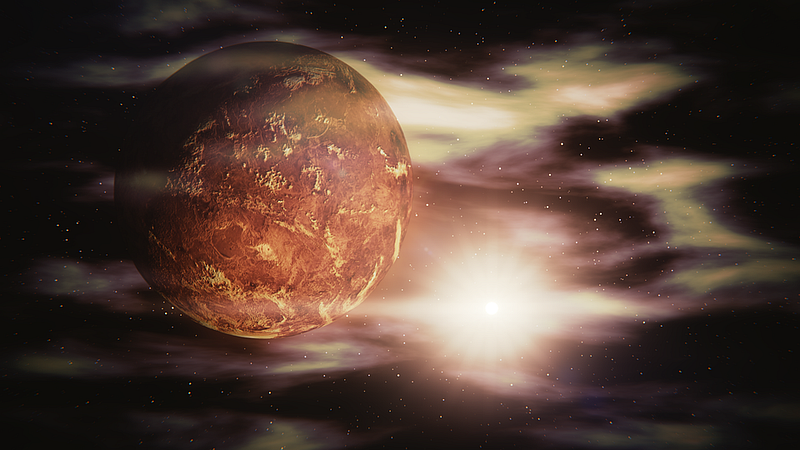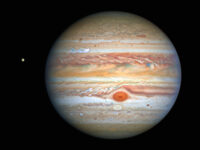You Can’t Run Away If the Planet Is Already a Runaway
By Lauren MacDonald, Environmental Science & Chemistry, 2022

Humanity has been dreaming about colonizing other planets for decades. Hundreds of science fiction stories and novels have been written about humans packing up and moving off of Earth, but it’s not as easy as a short trip to the closest planet. Even though Venus is the closest planet by distance, the atmosphere (92 times denser than our own) and climate (462 degrees Celsius) make it uninhabitable. However, scientists think that Venus once had a climate not dissimilar to Earth’s.
The reason we’re able to predict the atmosphere on Venus with any sort of accuracy is because of several NASA fact-finding missions to Venus, most notably the Pioneer Venus mission that sent probes to orbit the planet from 1978 to 1992 and the Magellan mission that radar mapped Venus from 1989 to 1994. These two missions, along with several others, gave us data that allow us to look into Venus’s past and make estimates about both current and past atmospheric and climate conditions.
There are three main factors that impact a planet’s climate: proximity to the sun, rotational velocity, and topography. First, Venus is much closer to the sun than Earth, and therefore receives significantly more energy from sunlight in the form of ultraviolet radiation. Second, since Venus rotates slower than Earth, there is more time for the sun to warm the atmosphere each day. Lastly, the high landforms and shallow seas on Venus several million years ago imply that the greenhouse effect was less potent because of water vapor.
Even though Venus is the closest planet by distance, the atmosphere and climate make it uninhabitable.
Millions of years ago, our sun was approximately 30 percent dimmer than it is now, and that allowed Venus to have liquid water and a temperature slightly below Earth’s current temperature, despite the slow rotation and proximity to the sun. But as the sun got hotter, the greenhouse effect began to kick in.
Energy balance, and therefore temperature, within an atmosphere is determined by the difference between the amount of energy entering the system and the amount of energy leaving. On Earth, a steady temperature is maintained because the incoming energy from sunlight is approximately equal to the outgoing thermal radiation from the Earth. Part of that balance is due to the greenhouse effect, a positive feedback loop that exists both here and on Venus. Greenhouse gases in the atmosphere — including water vapor, carbon dioxide, methane, and several others — absorb thermal and near infrared radiation that is emitted by the ground, effectively trapping the energy in the atmosphere and increasing the temperature.
At home, part of the greenhouse effect is driven when the concentration of water vapor in the atmosphere is increased through some mechanism. The increase of water vapor (a greenhouse gas) causes more outgoing thermal radiation from the Earth to be trapped in the atmosphere by said water molecules. The resulting increase in temperature results in more evaporation and more water vapor, and the cycle continues.
On Earth, this positive feedback loop is kept in check by other processes that reduce greenhouse gases in the atmosphere. For example, carbon fixation in the ocean reduces carbon dioxide levels in the atmosphere — algae respire and fixate carbon, then when the algae die, the carbon is trapped in the biological material that falls and accumulates on the ocean floor.
The surface of Venus will never be habitable, at least not on a timescale that is comparable to humanity’s.
But on Venus, the additional ultraviolet radiation from the sun allowed the water that evaporated into the atmosphere to be split into oxygen and hydrogen. The lightweight hydrogen escaped the atmosphere, and now there’s no longer water on Venus. The lack of water and life means that carbon dioxide can’t be pulled out of the atmosphere in any quantity that would have an impact on the greenhouse effect. On top of that, carbon dioxide is continuously being put into the atmosphere by volcanic eruptions that superheat mantle rock and cause carbon to sublimate out into the atmosphere.
The combination of all of these factors caused the feedback loop to reach an upper limit, hence the feedback loop gets the term “runaway.” The continuous positive feedback means Venus continues to get hotter and hotter and that it would take a monumental amount of energy or some cataclysmic event to shift the feedback loop in the other direction to start cooling the planet. The surface of Venus will never be habitable, at least not on a timescale that is comparable to humanity’s, but being able to understand atmospheric processes on other planets helps us understand what’s going on right here at home.





